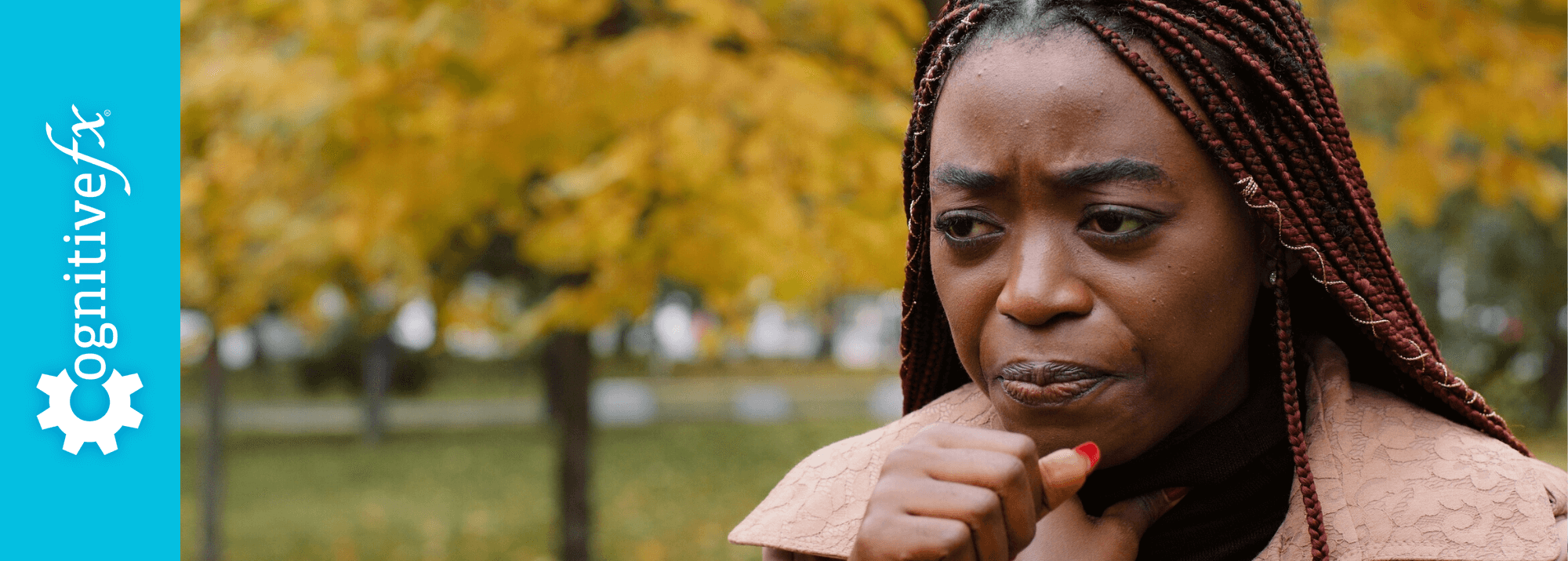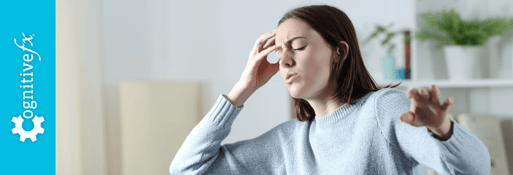Long COVID is real. Data shared by the Centers for Disease Control and Prevention (CDC) from the Household Pulse Survey (July/August 2022) show that more than 40% of adults in the United States have had COVID-19, and nearly one in three of them (approximately 30%) experience symptoms for more than three months after their original acute infection. Not all patients with long COVID are severely affected, but the report estimates that two to four million Americans are currently unable to work because of persistent COVID symptoms.
Despite these worrying figures, it can be extremely difficult for these patients to get a diagnosis and treatment. Patients with complex cases may have to see a host of specialists because most doctors either don’t know what’s causing the symptoms or can’t offer many treatment options. And even when they do find a more knowledgeable doctor, that doctor still may not be able to offer all the treatment methods they need. Not surprisingly, these patients are frustrated and anxious.
One of the difficulties is that the most common symptoms — headaches, fatigue, and shortness of breath — can be attributed to many different health conditions. Plus, not everyone experiences the same symptoms at the same time; in some patients, symptoms come and go. This variability can make doctors hesitant to give a long COVID diagnosis. When they do, they might not be able to offer more than a few medications for specific symptoms, diet recommendations, and encouragement for the patient to exercise more.
As a result, some long COVID sufferers look for alternative treatments, such as blood filtering and anticoagulation drugs, some of which have sparse evidence to support their use.
At Cognitive FX, we take a different approach. If you’re looking for a treatment to address your long COVID symptoms, our approach is safe and effective, doesn't rely on the use of medication, and is evidence-based.
In this article, we’ll look at some causes of long COVID and how we can address many of those causes at Cognitive FX. We cover:
Our treatment was originally designed to help post-concussion patients recover from persistent symptoms. After just one week of treatment, over 90% of our patients show improvement. Thus far, we’ve seen similar results with long COVID patients who pass our current screening criteria. To discuss your specific symptoms of COVID-19 and determine whether you’re eligible for treatment at our clinic, schedule a consultation.
Long-Term Symptoms of COVID
.jpg?width=1000&name=covid-can-cause-long-term-problems%20(5).jpg)
Further reading: Long COVID in children
A SARS-CoV-2 infection can attack the body in many different ways, causing issues that may affect the lungs, heart, stomach, kidneys, liver, and other internal organs. Many patients also experience mental health problems, either directly from the viral infection itself or from the grief of dealing with persistent and debilitating symptoms.
It was originally described as a respiratory disease, but studies have since identified over 200 symptoms associated with long COVID, including:
Breathing problems
- Breathlessness or shortness of breath
- Cough
|
Cardiovascular problems
- Chest tightness
- Chest pain
- Heart palpitations
|
Neurological symptoms
- Difficulty focusing
- Memory problems
- Brain fog
- Headache
- Sleep disturbances
- Pins and needles or numbness
- Dizziness
- Amnesia
- Hallucinations
- Difficulty with motor function or speech
|
Digestive problems
- Abdominal pain
- Diarrhea
- Not feeling hungry
- Weight loss
- Nausea and vomiting
- Bowel incontinence
|
| Muscle and bone problems
|
Mental health problems
- Depression
- Anxiety
- PTSD (post-traumatic stress disorder)
- Inability to feel pleasure and enjoy things
|
Skin conditions
- Skin rashes
- Hair loss
- Excessive sweating
|
Ear, nose and throat symptoms
- Tinnitus
- Earache
- Sore throat
- Loss of smell and/or taste
|
General symptoms
- Fatigue
- Symptoms that get worse after physical or mental effort (also known as “post-exertional malaise”)
- Erectile dysfunction
- Changes in menstrual cycle
- Bladder control issues
|
For further information about some of these symptoms, see the following articles:
What Causes Long COVID?
.jpg?width=1000&name=covid-can-cause-long-term-problems%20(6).jpg)
Research on what causes long-term effects from the SARS-CoV-2 coronavirus is ongoing. Anyone who developed a COVID infection — whether they’re severe COVID-19 survivors who spent time in the ICU (intensive care unit) or patients who only had mild symptoms — is at risk for developing long-term problems. The exact mix of causes varies from person to person. While post-intensive care syndrome (PICS) may impact those who were treated in the ICU, most long COVID patients are likely suffering from one or more of these other mechanisms:
Uncontrolled Inflammation
Inflammation is a normal part of recovery during and after a viral infection. It helps the body remove the virus and repair injured tissue. However, too much of it can have severe consequences, especially if the inflammation continues beyond any actual outside threat.
Studies show that long-haul COVID-19 patients continue to have inflammation and activation of the immune system response for at least eight months after initial infection, which may explain some lingering symptoms and other sequelae (secondary conditions that develop as a consequence).
Neurovascular Coupling Disruption
Researchers have also found a link between long COVID and damage to the endothelium. In simple terms, the endothelium is the thin membrane that covers the inside of blood vessels. In the brain, this is part of the neurovascular unit, which includes vascular cells, glial cells, and neurons.
-1.jpg?width=552&height=326&name=covid-can-cause-long-term-problems%20(1)-1.jpg) Image source: Nelson et al (2016).
Image source: Nelson et al (2016).
Under normal circumstances, nerve cells get oxygen and nutrients, thanks to a surrounding network of blood vessels and a delicate mechanism that ensures neurons can order what they need and have it delivered at the right time and to the right location. This dynamic is called neurovascular coupling (NVC).
In the long COVID patients whose brains we’ve imaged, this connection between nerve cells and blood vessels is disrupted (either by direct damage to the endothelium from COVID-19 or through other post-COVID dynamics). As a consequence, some areas in the brain aren’t functioning at the needed level. This situation (called neurovascular coupling dysfunction) explains many of the physical and cognitive symptoms experienced by these patients. NVC dysfunction is also closely linked with autonomic nervous system dysfunction, which can also cause post-COVID symptoms.
Further reading: What is neurovascular coupling?
Dysfunction of the Autonomic Nervous System
Although not entirely understood yet, dysfunction of the autonomic nervous system (ANS) is now recognized as an important feature of long COVID.
The ANS controls bodily functions we can’t consciously change (or that we only control with focus), such as heart rate, blood pressure, breathing rate, sweating, and body temperature. The ANS moderates these processes via an interchange between the sympathetic nervous system (SNS), which is responsible for our “fight or flight” reactions, and the parasympathetic nervous system (PNS), which controls our “rest and digest” processes. These two parts work together to control the way our body reacts to the environment.
Malfunction in the way PNS and SNS work together results in many of the symptoms experienced by long haulers, including exercise intolerance, headaches, blood pressure changes, urinary incontinence, heart palpitations, problems breathing, and more.
Further reading: Long COVID Can Cause POTS and Dysautonomia
Vision and Vestibular Problems
It’s common for long COVID patients to develop vision and/or vestibular issues.
When it comes to vision issues, patients may complain of dry eyes, redness, itching, blurry vision, sensitivity to light, and the feeling that there is a foreign particle in the eye. There is some evidence to suggest that COVID restricts blood flow to the retina. Many of these symptoms could also come from poor neurovascular coupling (in visual, sensory processing, and other brain areas) and ANS changes.
Vestibular symptoms include dizziness, vertigo, lightheadedness, spatial disorientation, and sleep disturbances, among others. COVID-19 may affect the inner ear (where the vestibular system is located) in multiple ways, including direct viral infection, severe inflammation, or blood clotting that could restrict the blood supply to the vestibular system. Any of these can lead to damage to the inner ear and cause long-term vestibular complaints.
Further reading: Vestibular therapy for concussion (and COVID patients)
Vagus Nerve Damage
Recent research shows that damage to the vagus nerve may be responsible for some long COVID symptoms. This vital nerve runs from the brain into the body, connecting to the heart, lungs, intestines, and several muscles involved with swallowing. The vagus nerve plays a role in many bodily functions, including heart rate, speech, the gag reflex, sweating, and digestion, as it’s tied to ANS function.
Not surprisingly, patients with vagus nerve issues can face issues with their voice, difficulties swallowing, dizziness, a high heart rate, and low blood pressure, to name just a few.
Microclots
Despite initially characterizing COVID-19 as a respiratory disease during the pandemic, medical professionals discovered that the virus can also affect the vascular (blood flow) and coagulation (blood clotting) systems.
Under normal circumstances, if you get a cut, your body forms blood clots to stop the bleeding. It can also eliminate these clots very efficiently when they’re no longer needed. In patients suffering from the long-term effects of COVID-19, however, this disposal mechanism may not work as well. Some researchers believe that microclots stay in the bloodstream.
The presence of these persistent microclots would interfere with healthy lung function and cause further vascular issues, including the inability of some cells to get enough oxygen in the tissues to sustain bodily functions. If that’s true, then the resulting widespread hypoxia may be responsible for many of the debilitating symptoms associated with long COVID. All that said, the theory is still controversial, but is widely publicized as medical professionals search for answers.
Persistent infection
For some patients, the symptoms of long COVID follow a relapsing-remitting pattern, with symptoms such as fever and headaches more prevalent on some days than others. This has led some researchers to suggest that persistent infection may be behind many of the symptoms of long COVID, with the virus still present in the patient’s body over six months after the original infection. But most patients likely do not have a persistent infection; it’s most likely to affect patients with pre-existing immune issues.
Medications and Lifestyle Changes
While medication and lifestyle changes often can’t explain a long COVID case on their own, they may contribute to the symptoms you’re experiencing. Side effects from medication used to treat the acute infection or post-COVID symptoms could also contribute to your symptom burden. In addition, many patients stop exercising during COVID or may abandon healthy eating habits. Even an increase in stress due to illness and its consequences could increase symptoms such as fatigue. For more insight, consult with your physician on the possible effects of medication, diet, and stress on your long-term problems after COVID.
Treatment for Long COVID at Cognitive FX
.jpg?width=1999&name=covid-can-cause-long-term-problems%20(1).jpg)
Since 2014, we’ve been treating patients with long-term symptoms caused by a concussion. This condition is called post-concussion syndrome (PCS). Patients with PCS may experience a myriad of symptoms, including brain fog, headaches, dizziness, memory issues, feelings of overwhelm, and many others, for years after the concussion.
When reports of COVID long haulers first started, we noticed that the symptoms were incredibly similar to those experienced by our patients. We confirmed the similarities between long COVID and PCS with our brain imaging facilities and adapted our treatment to suit long haulers. This approach works because long COVID affects the brain, vision, vestibular function, and autonomic nervous system in very similar ways to a mild traumatic brain injury.
Further reading: Long COVID can be treated as a mild traumatic brain injury
Before treatment, all of our patients undergo a brain scan called functional neurocognitive imaging (fNCI) to determine how the virus affected their brain. The scan looks at how the blood flows in 56 regions of the brain while the patient performs a series of cognitive tasks. The scan also looks at how these regions communicate with each other.
-2.jpg?width=552&height=256&name=image9%20(1)-2.jpg)
Our clinicians use the results from the scan to design a customized treatment plan for each patient, which we call Enhanced Performance in Cognition Treatment (EPIC).
.jpg?width=246&name=covid-can-cause-long-term-problems%20(3).jpg) During treatment, patients are treated with multidisciplinary therapies combined with physical exercise to restore neurovascular and autonomic function and to improve vision and vestibular symptoms.
During treatment, patients are treated with multidisciplinary therapies combined with physical exercise to restore neurovascular and autonomic function and to improve vision and vestibular symptoms.
Sessions of cardio exercise — typically done on a stationary bike or treadmill — are a crucial component of our treatment. Exercise stimulates the brain to release a chemical called brain-derived neurotrophic factor (BDNF). BDNF stimulates communication between nerve cells and improves memory and learning.
Preparing the brain this way makes it more receptive to the other therapies that patients have for the rest of the day.
Those therapies include…
Cognitive therapy, for example, is used to address cognitive issues such as brain fog, difficulty concentrating, poor memory, and problems with attention. Some example exercises include word games, memorizing a list of items, and finding hidden patterns.
Our therapists use neurointegration therapy to address issues with the vision and vestibular systems and to help those systems communicate better with each other and with the brain. Therapists might help you with eye tracking, gaze fixation, eye saccades, the Brock string (which helps your eyes to focus on objects at different distances), and more.
.jpg?width=1999&name=covid-can-cause-long-term-problems%20(4).jpg)
During sensorimotor therapy, our therapists place sensors on your hands and feet to measure how you follow a given beat with taps, claps, and stomps, while at the same time completing cognitive tasks, such as playing Taboo.
After a week of therapy, most of our long COVID patients notice significant improvements in symptoms such as fatigue, brain fog, sleep disturbances, visual difficulties, and headaches, to name just a few.
For example, after months of dealing with a variety of symptoms, including irregular heartbeat, intense fatigue, and brain fog, Sarah Sharp decided to book a consultation at Cognitive FX for herself and her daughter Madison, who was also experiencing long COVID symptoms. Treatment wasn’t easy for Sarah, but just one day into therapy, she felt completely different. “I woke up, and I felt a mental clarity — like I could see for the first time in 20 months. It's like getting glasses for the first time,” she said.
Madison found treatment equally difficult. “When I got called to do cognitive therapy, it was really hard. It felt like my brain was melting the entire time,” Madison explained. “But I was beyond excited. I could see the holes in my brain and the connections I was missing.”
Sarah’s son Boston also received treatment. Therapy was demanding but soon he started to feel the benefits. “I was really happy because I felt like me again,” he shared. “This is super cliché, but I felt like me. And it was the greatest feeling that I was back.”
Overall, the members of the Sharp family who have undergone treatment at Cognitive FX feel very positive about it. “I feel the way they do medicine is the way medicine should be done,” said Madison. “Especially with brain injuries, the care is better when it's patient-centric and collaborative.”
Further reading: How This Family of Eight Overcame Long COVID Symptoms
Living with Long COVID
.jpg?width=1000&name=covid-can-cause-long-term-problems%20(2).jpg)
It’s not easy to live with post-COVID-19 syndrome. Here are a few things you can try at home to help:
Manage fatigue
- Pace yourself throughout the day. Plan in advance what you need to achieve, and do the most important tasks when you’re most alert.
- Take frequent breaks during the day. Sometimes even a few minutes away from the computer can help you feel more relaxed. Make sure you stop before you feel exhausted.
- Don’t stop doing the things you love just because you feel tired. If you can’t find the energy to go for a run, then go for a short walk instead. Gradually increase the amount of exercise you do.
Manage brain fog
- Use notes to help you remember important information such as medical appointments or meetings at work. See if you can remember the information before you check the notes; this will help your memory improve.
- If you’re struggling to complete a complex task, break it down into smaller steps and check your progress as you go along.
- Eat a brain-friendly diet. A diet rich in fruits and vegetables, and low in processed fatty and sugary food, can improve memory and attention.
- Engage in physical exercise regularly, ideally aerobic exercises to increase your heart rate and stimulate blood flow to the brain. This improves memory and mood, helps you sleep better, and reduces stress and anxiety.
- Make sure you follow a good sleep routine to get as much sleep as possible. Avoid caffeinated drinks late at night, and don’t use your mobile phone before going to bed.
- Stay socially active by going out with friends, joining a club, or simply having a chat on the phone with your loved ones. Social interactions have a positive effect on your brain and can help fight brain fog.
Boost your mood and mental health
- Recovery can be a tricky process. Be kind to yourself and accept that some days are better than others.
- Make sure you keep in touch with other people. Connecting with loved ones can make you feel happier and more relaxed.
- Following a daily routine can be good for your mood and mental health.
- Consider practicing mindfulness, meditation, and/or yoga.
Relieve joint or muscle pain
- Flexibility exercises (such as yoga or tai chi) and strength exercises (such as climbing stairs or working with resistance bands) can help patients relieve joint pain. If you’re just starting, it’s best to check with your healthcare provider to ensure it’s safe for you to engage in this type of exercise.
Do your homework from Cognitive FX
- After your treatment at Cognitive FX, one of our therapists will meet with you to review your progress and give you a series of exercises to do at home. Completing these exercises is one of the best ways to ensure continued recovery after your EPIC treatment.
Find Relief at Cognitive FX
There aren’t many good treatment regimens for COVID-19 survivors who suffer from ongoing symptoms, but at Cognitive FX, we’ve seen an average of 60% symptom improvement after just one treatment week. Many people experience improvements even after just the first day. We can provide more types of therapy at one time than any other treatment provider and make the most of your time with us. Your symptoms are real, they have a cause, and they can get better with appropriate treatment.
To determine if you are eligible for our treatment program, please schedule a consultation.


.jpg?width=1000&name=covid-can-cause-long-term-problems%20(5).jpg)
.jpg?width=1000&name=covid-can-cause-long-term-problems%20(6).jpg)
-1.jpg?width=552&height=326&name=covid-can-cause-long-term-problems%20(1)-1.jpg) Image source:
Image source:.jpg?width=1999&name=covid-can-cause-long-term-problems%20(1).jpg)
-2.jpg?width=552&height=256&name=image9%20(1)-2.jpg)
.jpg?width=246&name=covid-can-cause-long-term-problems%20(3).jpg) During treatment, patients are treated with multidisciplinary therapies combined with physical exercise to restore neurovascular and autonomic function and to improve vision and vestibular symptoms.
During treatment, patients are treated with multidisciplinary therapies combined with physical exercise to restore neurovascular and autonomic function and to improve vision and vestibular symptoms..jpg?width=1999&name=covid-can-cause-long-term-problems%20(4).jpg)
.jpg?width=1000&name=covid-can-cause-long-term-problems%20(2).jpg)



.png?height=175&name=Physical%20therapy%20covid%20(2).png)




